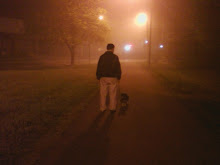Sermon preached July 19, 2009
Text: Mark 6:30-34, 53-56
Thoughts about God vary widely. Here are a couple of notes to God penned by children. Thank you for the baby brother but what I wanted was a puppy. Joyce. Dear God, If you give me a genie lamp like Alladin I will give you anything you want except my money or my chess set. Raphael. Here we have images of God as a cosmic waiter taking requests and filling them as best as God can - - - and sometimes missing the mark.
Not all our images for God, not all the images for God in our minds or in our culture are so gentle or benign. Some of the images used for God are more terrifying than funny.
The God that holds you over the Pit of Hell, much as one holds a Spider, or some loathsome Insect, over the Fire, abhors you, and is dreadfully provoked; his Wrath towards you burns like Fire; he looks upon you as worthy of nothing else, but to be cast into the Fire. Jonathan Edwards, “Sinners in the Hands of an Angry God” (July 8, 1741)
Okay, so that sermon is two hundred sixty some years old, but the image of God used there remains current in many strands of the Christian Church. The National Association of Evangelicals includes in their statement of faith a phrase about the “resurrection of damnation” that occurs in the future. The statement of faith of the Vineyard Church includes a belief about “eternal conscious punishment” for the wicked. Behind those phrases one sees Edwards image of an angry God, a God whose wrath and anger burn hot against those who do not fall in line. Their fate is fire, the resurrection of damnation, eternal conscious punishment.
When I encounter such doctrines I am reminded of the words of the third century Christian theologian Origen, who wrote that there were people in the church who, “while believing indeed that there is none greater than the Creator, in which they are right, yet believe such things about him as would not be believed of the most savage and unjust of men” (On First Principles, 184-5/253; p. 271). The God portrayed by Edwards seems a God most interested in us groveling, engaging in fearful obedience, clipping along at God’s heel. The image of God as master and humans as obedient puppies being taught to heel is not far from Edwards imagery, nor necessarily from those who would find Edwards imagery congenial today.
I believe some of these images haunt us. If they were ever a part of our experience of Christian faith, they often remain deeply embedded in our souls and we continue to struggle with them. These images of God sometimes also afflict our national life as some persons somehow take on the role as executors of God’s wrath and vengeance - setting off suicide bombs, flying planes into buildings, shooting physicians whose practices they oppose. Certainly the vast majority of people whose image of God fits in with this angry, wrathful judge do not engage in violent behavior, but the images are not simply benign.
While the Bible has a great deal to say about judgment, an excessive focus on that, on God as judge, is unbalanced and in many ways unbiblical. It certainly does not comport well with the central aspects of Jesus' teaching. Marcus Borg, in his book Meeting Jesus Again for the First Time contends that “Jesus invited his hearers to see god not as the judge… but as gracious and compassionate” (82). Jesus himself, in Borg’s words is, for Christians, “the face of God… the side of God turned toward us” (137).
If we take Jesus as our definitive clue into the nature of God, as the side of God turned toward us, as the face of God, what does that tell us? As Jesus went ashore, he saw a great crowd; and he had compassion for them, because they were like sheep without a shepherd; and he began to teach them many things…. And wherever Jesus went, into villages or cities or farms, they laid the sick in the marketplaces, and begged him that they might touch even the fringe of his cloak; and all who touched it were healed.
The God of Jesus Christ, the God whose face shines in the face of Jesus, whose hands reach out in the hands of Jesus, who speaks in some remarkable way through the words of Jesus, this God is a God of care, of compassion, of healing. Healing of broken lives is what this God desires more, not groveling and heeling like some fearful pet. Does this God judge? Yes, but I would argue God’s judgment is not for the sake of punishment but for the sake of diagnosis – here are the broken places in your heart, mind, soul, world and they need healing and repair. Judgment is a function of compassion, not anger. God’s judgment might be something like these words from a psychoanalyst. “The ways we protect ourselves tend also to be the ways we imprison ourselves” (Adam Phillips and Barbara Taylor, On Kindness, 62-63). Hearing that, we know where to look to see our prisons and know something more about how to be more free, more whole, how to be healed and well.
God is a God of healing and well-being wholeness and God will use a variety of means to bring that healing and well-being and wholeness into our lives. The church exists to bring God’s healing into the lives of those who are a part of it and to share that healing with all the world. We are here for each other, and for our community and world. We celebrate the good news of God’s love here, help each other see those broken places, and help each other heal. We encourage each other to reach out into the world with hope and healing.
I believe Lake Superior is something God uses to bring healing into people’s lives. In some ways that is remarkable, because the lake’s effects can be cruel. Fifty degrees in July has a certain cruelty to it. More profoundly, we know that the Lake has taken its toll. Some of us remember the Edmund Fitzgerald. All of us know about the chapel in our church commemorating four lives lost in the Lake. Still this powerful, cold, mysterious presence is often a source of healing. Its fresh waters sustain our lives. Its navigable waters provide recreation and an economic resource. Its wonder and beauty nurtures our souls, our imaginations. When I was in college, I spent a number of thoughtful moments listening to the waters of the Lake lap up against the shore as I thought about my life. It is a discipline I should renew. I am often taken by the beauty of the Lake, on a sunny day the purity of its blue waters, on a full-moon night, its ability to reflect the bright orange glow. For me, and for many, Lake Superior is a healing presence, one of the ways God’s healing touches our lives.
God is a God of compassion, care, healing. Today, I invite you to know that, to experience that. See the broken places in your life and let God touch them. See those places in your life where self-protection has become self-imprisonment, and let God’s love free you.
Experiencing God’s love, compassion and care, reflect it in your life. Care for others. Tend all that heals, including caring for places like Lake Superior. Work with God to bring more healing to the world’s broken places.
Alexie Torres-Fleming is the founder and executive director of Youth Ministries for Peace and Justice in the South Bronx. She was raised in a housing project in the South Bronx by parents who were Puerto Rican immigrants. By the time she was in her twenties, she has escaped the poverty of her neighborhood, living in a nice apartment in midtown Manhattan. But she sensed that God wanted something from her. She sensed God was calling her back to her neighborhood to be a force for healing, to see the healing power of the people that were still there. She returned to her old church and worked with it to organize against drugs in the neighborhood. She worked with others to organize a march through the neighborhood and about two hundred people showed up. Two weeks later, drug dealers, in retaliation, torched her church. She worked with others again to organize another march, even in the face of death threats – this time 1,200 people showed up to march – God’s healing power at work. Alexie saw God’s healing power working through one person in particular.
I learned what power was that day… from a man who was homeless as a teenager, who was an alcoholic, who raised four children in the South Bronx, who was a deli man. A man who talked about how they used to make him work in the back of the deli. If he needed something, they had a little hole in the wall where he could ask, because they didn’t want to see the brown people in the front of the deli. A man who, when I was a little girl, washed urine off the elevator walls…. On that day, this man, my father, taught me the greatest lesson about the poor and about power, because when I looked out at the crowd gathered to march, he was there. (Sojourners, July 2009, 34).
There are places in our lives that need healing. Open to God’s compassionate healing. There are places in the world that need healing. Let the power of God’s compassionate healing touch the world through you.
One final story. One evening a child had been watching the news before supper. When he was asked to say the table grace he added a little to it. “Dear God, take care of Mommy and Daddy, and my little sister, and Grandma, and please, God, take care of yourself, because if anything happens to you, we’re all sunk.” (Dick Van Dyke, Faith, Hope and Hilarity, 39). We all need the healing power of God’s compassion in our lives to help mend those broken places within. It comes to us in many ways, a friend, a church community, a book, a lake. The healing power of God’s compassionate love can touch the world through you, too. Amen.
Subscribe to:
Post Comments (Atom)


No comments:
Post a Comment